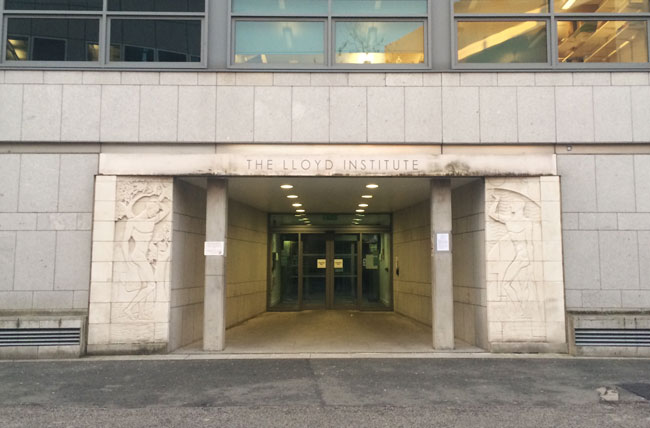
Upon hearing the word anorexia, some people would think of weight loss. Anorexia, however, has the highest fatality rate of any psychiatric disorder. The illness affects a person’s life at every front, from physical health to mental health, as well as the spirit, relationships and future of those affected. People suffering from anorexia need to seek help immediately, where they can undergo many avenues of treatment. Oliver-Pyatt Centers has more information on anorexia nervosa and hosts a compassionate recovery process.
As an expert in the illness, Dr Lorenzo Bracco’s new perspective on treatment places the patient at the centre of a therapy in which the goal is to achieve harmony between the science of medicine and a person’s body, emotions and psyche. This permits Bracco, from the University of Turin, Italy, to reach a very early diagnosis of adolescent anorexia and even formulate a hypothesis of risk before adolescence. Bracco’s approach is influenced by Freudian analysis as well as his background in philosophy, having obtained an undergraduate degree in the field before pursuing a career in medicine.
The event with Neurosoc, Trinity’s neuroscience society, began with an introduction given by Dr Massimiliano Bianchi, Adjunct Assistant Professor in Trinity’s School of Psychology. He noted that Bracco’s new book, Anorexia, The Real Causes: Blood Types and Trauma has been getting a lot of recognition worldwide.
Bianchi define anorexia from the DSM-5 (The Diagnostic and Statistical Manual of Mental Disorders, Fifth Edition) as a disease being “characterised by a persistent disturbance of eating and eating-related behaviour”. He pointed out that anorexia usually has an incidence of about eight people per 100,000 per year, though there has been a steep upward trend in incidence since the 1970s. Anorexia usually affects females between the ages of 15 and 24 years old. However, despite the disease being extremely traumatic and potentially lethal, only one third of anorexics are treated in mental health clinics. This highlights how desperately in need anorexia is of early diagnostic tools.
Bracco took to the podium and began by playing a video testimonial given by a young girl who had anorexia. The woman, since recovered, described how miserable she felt when suffering with anorexia, counting calories in even a tea bag. She spoke of how the only thing that brought her pleasure was seeing her ribs jutting out from under her skin. Now that she has recovered, she feels Bracco’s book aided her greatly in understanding her disease. Bracco then explained that the most dangerous type of anorexia is that which affects adolescent females, who make up 90 per cant of anorexia patients. He quickly touched on other types of anorexias, such as anorexia due to chemotherapy, cancer, hormonal disorders, burnout and depression. Going into more depth on anorexia in depression, he explained how depression more commonly results in the overconsumption of food, though other times it can result in a complete lack of interest in food, and this is fueled by a loss of the will to live.
He explained his new theory which was prompted by an event that occurred 24 years ago when examining the medical history for one of his patients, a 30-year-old woman who had had anorexia since adolescence. When he asked his patient the simple question of what her blood type was, her mother, who was present at the visit, became very angry as her daughter did not but, rather than becoming angry with the her, her response made Bracco think about the role of blood types in anorexia. After conducting years of research between mothers and their anorexic daughters, he was able to conclude that anorexic women do not posses the same blood type as their mothers. Further research found that the young women who suffered from anorexia had a “wrong blood transfusion” when they were foetuses – their blood and their mothers blood mixed, which is seen as a medical emergency.
One of the primary roles of the placenta is to ensure that the mother’s blood does not mix with her foetus’s blood. However, sometimes a minute amount of the mother’s blood mixes with her child’s blood, causing what is called a “wrong blood transfusion alarm” in the child. This causes immunological, neurological and physical problems in the foetus, and Bracco believes that it is a “necessary, but not sufficient condition” for anorexia. Knowing this could allow doctors to set a preventative therapy without having to wait until their patients are badly affected to diagnose them with anorexia.
Bracco ended by going through the awards his book has won, such as the ‘“esare pavese award for nonfiction medical writing”. He stressed, however, that this has not been the most important achievement of his writing. His book has been able to give sufferers of anorexia peace as the stigma surrounding anorexia has been lessened in knowing that their disease is in fact biological, not purely psychological. To use Bracco’s words: “It’s not their fault.” This allows society to remove “the shadow of shame and blame” that hangs over anorexia. Knowing that anorexics must have a different blood type to their mothers also narrows the research groups upon which scientists base their studies, and this will allow them quicker elucidate biomarkers for the disease.






